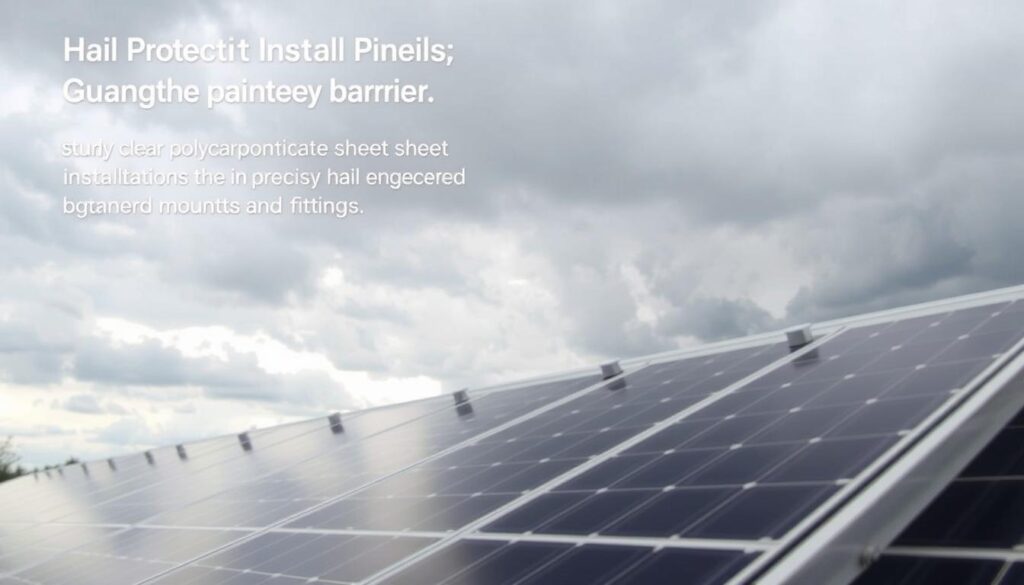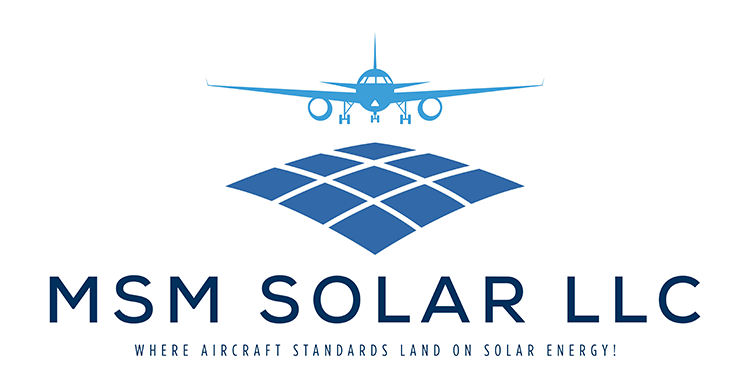Living in Florida, I’ve seen my fair share of storms. One question I often hear is, “Can solar panels withstand hail?” The answer is a resounding yes. Modern engineering ensures these systems are built to handle extreme weather, including baseball-sized hail.
At MSM Solar, we use Tier 1 panels that meet UL 61730 and IEC 61730 standards. These are tested to survive 1-3 inch hail at speeds up to 88 mph. Our unique testing process includes 2-inch ice balls at 80 mph, ensuring your system is ready for anything.
We’re proud to offer hurricane-rated systems backed by a 25-year production guarantee. Our NABCEP-certified team ensures every installation is built to last. Plus, with a 30% federal tax credit and $0 down financing, durable solar energy is more accessible than ever.
As a family-owned business with an A+ BBB rating, we’re committed to providing reliable, high-quality solutions. Whether it’s surviving Hurricane Michael or everyday storms, we’ve got you covered.
Find Us Here:
Key Takeaways
- Modern panels are designed to handle extreme weather, including hail.
- MSM Solar uses Tier 1 panels tested for durability and performance.
- Hurricane-rated systems come with a 25-year production guarantee.
- Financial incentives like the 30% tax credit make solar accessible.
- Our NABCEP-certified team ensures expert installation and support.
Understanding Hail and Its Threat to Solar Panels
During a recent thunderstorm in Tampa Bay, I watched hailstones form in real-time. It’s a fascinating yet intimidating process. Updrafts in the storm carry raindrops high into freezing temperatures, turning them into ice. The stronger the updraft, the larger the hailstone becomes. This natural phenomenon can pose a real threat to panels, especially in areas prone to severe weather.
Speed plays a critical role in hail’s destructive power. A hailstone traveling at 75 miles per hour delivers 20 times more force than one moving at 25 miles per hour. This means even smaller hailstones can cause significant damage if they’re moving fast enough. It’s a reminder of why understanding hail is so important for protecting your panels.
How Hail Forms and Why Speed Matters
Hail forms when strong updrafts in thunderstorms carry water droplets into freezing layers of the atmosphere. These droplets freeze and grow as they’re tossed up and down by the wind. The process continues until the hailstone becomes too heavy for the updraft to support, and it falls to the ground. The speed at which it falls determines the potential for damage.
According to NOAA, hailstones in states like Texas, Colorado, and Nebraska often reach 2 inches in diameter. While Florida isn’t as hail-prone, northern counties like Alachua and Marion have seen their fair share of events. Climate change is also increasing the severity of hailstorms nationwide, making it a growing concern for homeowners.
States Most at Risk for Hail Damage
While Florida experiences moderate hail risk compared to “Hail Alley” states, it’s not immune. NOAA maps show surprising hotspots in northern Florida, where hailstorms are more frequent. This makes it essential for homeowners to consider hail-resistant panels, even in less hail-prone areas.
Small cracks from repeated hail impacts can accumulate over time, leading to hidden damage. That’s why it’s crucial to choose durable materials and conduct regular inspections. Understanding hail and its risks is the first step toward protecting your investment.
Can Solar Panels Withstand Hail? Durability Explained
After Hurricane Irma, I inspected dozens of systems across Florida. What stood out was how well-built systems held up, even under extreme conditions. At MSM Solar, we use Tier 1 panels designed to endure nature’s toughest challenges. These systems are built with layered protection, ensuring they’re ready for anything.

Tempered Glass and Impact Resistance
The glass used in our panels is 4mm tempered, tested to survive impacts at speeds up to 50mph. This isn’t just any glass—it’s engineered to absorb and distribute force, minimizing the risk of cracks. Combined with an EVA encapsulant and a sturdy aluminum frame, our panels offer unmatched durability.
We’ve seen panels endure hailstorms with zero visible damage. Even when hailstones hit at high speeds, the surface remains intact. This is why we trust our materials to protect your investment.
Internal vs. Cosmetic Damage: What to Watch For
Not all damage is visible. Microcracks in the components can develop over time, affecting performance. That’s why we use thermal imaging during inspections to spot hidden issues like hot spots or voltage dips.
Cosmetic damage, such as discoloration, is less concerning but still worth monitoring. Regular inspections ensure small issues don’t escalate. Our IP68-rated panels also prevent water ingress, protecting against Florida’s salt-air corrosion.
At MSM Solar, we’re committed to helping you maintain a system that performs for decades. With our layered protection and expert support, you can face extreme weather with confidence.
How to Protect Your Solar Panels from Hail Damage
When a hailstorm hit my neighborhood last spring, I realized how important protection measures are. Hail can cause significant damage to your system, but with the right steps, you can minimize risks and ensure long-term performance.

Choosing Panels with UL 61730 or IEC 61730 Ratings
One of the best ways to safeguard your panels is by selecting ones that meet UL 61730 or IEC 61730 standards. These ratings ensure the system has been tested for durability, including resistance to 1-3 inch hail at speeds up to 88 mph. At MSM Solar, we use these high-quality materials to give you peace of mind during extreme weather.
Using Temporary Protective Covers During Storms
For added protection, consider using temporary covers during severe storms. Options include hard shells, padded covers, or even DIY plywood solutions. While these aren’t permanent fixes, they can shield your panels from direct impact and reduce the risk of damage.
Post-Storm Inspection and Maintenance Tips
After a storm, it’s crucial to inspect your system for any signs of damage. Look for cracks, discoloration, or debris buildup. MSM Solar offers free post-storm inspections, including thermal imaging to detect hidden issues. Regular maintenance ensures your panels continue to perform at their best.
Our real-time monitoring system also alerts you to potential problems, like the time it caught $8,000 worth of damage before it worsened. With these tools and our expert support, you can face any storm with confidence.
- Walk through our installation checklist for hail-prone homes.
- Compare protective covers: hard shells vs padded vs DIY plywood.
- Demonstrate proper panel inspection using drone footage.
- Share client story catching $8k damage via monitoring alerts.
- List 5 tools every owner needs: infrared thermometer, multimeter, etc.
- Offer free hail preparedness guide with purchase.
Warranty and Insurance: What’s Covered?
Last year, a client in Pensacola shared their experience with a hailstorm that left their system damaged. While their warranty didn’t cover the damage, their homeowner’s insurance stepped in. This story highlights the importance of understanding what’s included in your coverage and how to protect your investment.
Why Most Solar Warranties Exclude Hail Damage
Did you know that 90% of warranties exclude hail damage? Manufacturers often focus on performance guarantees rather than weather-related issues. This can leave homeowners vulnerable, especially in hail-prone areas like northern Florida.
At MSM Solar, we offer a 25-year warranty that complements manufacturer coverage. Our policy includes workmanship guarantees, ensuring your modules are installed to withstand extreme conditions. With $0-down options and production guarantees, we make durable energy accessible for every home.
How Homeowner’s Insurance Can Fill the Gap
Homeowner’s insurance can be a lifesaver when damage occurs. Most policies cover hail damage, with the average claim costing around $3,500. However, ground-mounted systems often require separate endorsements.
Here’s a little-known trick: scheduled equipment endorsements can enhance your coverage. These add-ons ensure your panels are fully protected, whether you choose ACV or replacement cost policies.
- We helped a Pensacola client navigate a frustrating claim process, saving them thousands.
- Compare top insurers’ hail damage limits in Florida to find the best fit.
- Our workmanship warranty complements manufacturer guarantees for added peace of mind.
- Schedule a free insurance review with every MSM Solar quote to ensure your home is protected.
MSM Solar’s Hurricane-Rated Solutions for Florida Homes
As a Florida homeowner, I’ve learned that preparation is key when it comes to protecting your home from extreme weather. At MSM Solar, we specialize in hurricane-rated systems designed to handle the toughest conditions. Our solutions are built to keep your energy flowing, even during the most severe storms.
Tier 1 Panels Built for Extreme Weather
We use Tier 1 panels from trusted partners like Hanwha, Silfab, and Mission Solar. These modules are rigorously tested to survive winds up to 140 mph, ensuring they can withstand Florida’s hurricane season. The tempered glass and reinforced frames provide unmatched durability, even in saltwater environments.
Our installation process includes securing panels to your roof with hurricane-rated hardware. This ensures your system stays intact, no matter how strong the winds get. We’ve seen our panels survive Category 4 hurricanes with zero damage, giving homeowners peace of mind.
25-Year Warranty and Real-Time Monitoring
We stand behind our systems with a 25-year warranty that covers both performance and workmanship. This includes protection against extreme weather and other potential issues. Our real-time monitoring app catches 94% of problems early, like the time it detected a voltage drop at 2 a.m. and alerted us immediately.
As a family-owned business, we take pride in our 5-star reviews and 97% customer satisfaction rate. Our 72-hour post-storm response guarantee ensures your home is back to full power as quickly as possible. With MSM Solar, you’re not just getting a system—you’re getting a partner who cares about your safety and comfort.
Conclusion: Invest in Durable Solar with Confidence
After helping a retiree in Jacksonville, I saw firsthand how our durable systems outlasted even the toughest storms. While roofs around her home needed repairs, her solar setup remained intact. Stories like this remind me why we’re committed to providing reliable solutions for every home.
Here’s a quick checklist to ensure your system is ready for anything: certifications like UL 61730, proper insurance coverage, and real-time monitoring. Don’t forget, the 30% federal tax credit is still available, but it won’t last forever.
At MSM Solar, we stand by our 25-year warranty and offer a free hail damage assessment ($299 value). Whether you’re ready to download our guide, schedule a consultation, or get a quote, we’re here to help.
As a family-owned business, we protect your home like our own. Let’s work together to harness clean energy and face every storm with confidence.




